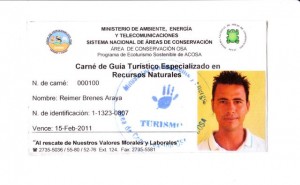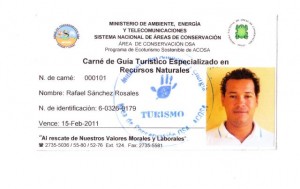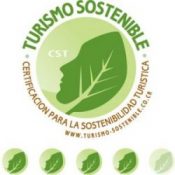Uvita High School
Uvita High School installs fence to border property
Adapted from South Pacific News
Eco Friendly School in Uvita-Bahia area
School in Uvita-Bahia area is an example of sustainable architecture
Adapted from South Pacific News
Costa Rica’s Oceans
 Costa Rica is a small country that represents only .03% of total world land mass yet contains 5% of the worlds biodiversity. It is a country that has more than 25% of it’s national territory under some form of protection yet the waters that border the country have been largely neglected with less than one percent being regulated under some form of protective category.
Costa Rica is a small country that represents only .03% of total world land mass yet contains 5% of the worlds biodiversity. It is a country that has more than 25% of it’s national territory under some form of protection yet the waters that border the country have been largely neglected with less than one percent being regulated under some form of protective category.Always improving our services
Through continuous trainings Bahia Aventuras guides have earned certifications from the Costa Rica National Area of Conservation System known as SINAC. Although finishing the courses is a great achievement, the Bahia Aventuras team continues to increase their knowledge and skills by participating in different courses and trainings. One course that the guides are currently participating in is offered by UNED. The course is composed of 7 modules such as local geography, natural history, tourist legislation, first aid and tourism control and will last approximately 3 months. Team Bahia Aventuras is always looking for opportunities to learn more in order to continue providing the most responsible and best service in the Uvita-Bahia and Osa area.


Snorkel the Crystal Blue Waters of Cano Island
Some of the best Costa Rica snorkeling happens to be a short one hour boat cruise from the beautiful towns of Bahia-Uvita, Osa. The magical place to snorkel is called Cano Island and it offers visitors pristine crystal clear waters to discover mother oceans mysteries. Explore the world below the oceans surface and become enchanted forever.
Cruise with us!
The Bahia Aventuras I is a 2008 boat design complimented with a 2008 Suzuki 250HP that allows for comfort and style when navigating. It has 14 individual seats and accomadates any of our tours; a 4 person Private Sportfishing Tour to a 14-passenger Bahia Aventuras Combo Tour. The boat is great for whale watching, snorkeling trips to Cano Island, nature tours to Corcovado National Park, sport fishing, bird watching tours through the mangroves, dolphin encounters, and just cruising the beautiful Marino Ballena National Park in Uvita-Bahia Ballena, located in the south pacific near the osa peninsula of Costa Rica.
Frequently asked questions
Q. Is it guaranteed that I will see whales and dolphins?
A. Bahia Aventuras is located in the south pacific of Costa Rica near the Osa Peninsula. Our tours are focused in and around the Marino Ballena National Park, one of the most cetacean-rich areas in all of Costa Rica. Visitors have the opportunity to see a wide variety of different species from humpback whales to bottlenose dolphins as well as sea turtles, manta rays, sea birds and other marine life. We could never guarantee 100% that visitors will have encounters with whales and dolphins as they are not held in captivity. The beauty of the Marino Ballena National Park is that we do encounter whales and dolphins about 95% of our outings during the whale season which stretches from mid July and October, and again in December through March, as they migrate to and from feeding and mating grounds in the north and south hemisphere. We recommend that you plan two different tours and get your 10% discount with us to see the widest range of behaviors, species and opportunities for close encounters with the amazing marine life the area has to offer.
Q. What can I expect to see?
A. We can never offer 100% guarantee of encounters with wild animals. However the following list is to be used as a guide to what we commonly see throughout the year. This list is based on the areas past years of recorded sightings:
January: Spotted Dolphins, Humpback Whales, Bottlenose Dolphins, Spinner Dolphins, Common Dolphins, Pseudo Orcas, Pilot Whales
Occasional: Orcas, Brydes Whales, Rissos Dolphins
February: Spotted Dolphins, Humpback Whales, Bottlenose Dolphins, Spinner Dolphins, Common Dolphins, Pseudo Orcas, Pilot Whales
Occasional: Orcas, Brydes Whales, Rissos Dolphins
March: Spotted Dolphins, Humpback Whales, Bottlenose Dolphins, Spinner Dolphins, Common Dolphins, Pseudo Orcas, Pilot Whales, Beaked Whales
Occasional: Orcas, Brydes Whales, Rissos Dolphins
April: Spotted Dolphins, Bottlenose Dolphins, Spinner Dolphins, Common Dolphins, Pilot Whales
Occasional: Humpback Whales, Orcas, Brydes Whales, Rissos Dolphins, Pseudo Orcas
May: Spotted Dolphins, Bottlenose Dolphins, Spinner Dolphins
Occasional: Orcas, Brydes Whales, Rissos Dolphins, Pseudo Orcas, Common Dolphins, Pilot Whales
June: Spotted Dolphins, Bottlenose Dolphins, Spinner Dolphins
Occasional: Humpback Whales, Orcas, Brydes Whales, Rissos Dolphins, Pseudo Orcas, Pilot Whales,
July: Humpback Whales, Spotted Dolphins, Bottlenose Dolphins, Spinner Dolphins, Common Dolphins
Occasional: Orcas, Brydes Whales, Rissos Dolphins, Pseudo Orcas, Pilot Whales
August: Humpback Whales, Spotted Dolphins, Bottlenose Dolphins, Spinner Dolphins, Common Dolphins
Occasional: Orcas, Brydes Whales, Rissos Dolphins, Pseudo Orcas, Spinner Dolphins, Pilot Whales
September: Humpback Whales, Spotted Dolphins, Bottlenose Dolphins, Spinner Dolphins, Common Dolphins
Occasional: Orcas, Brydes Whales, Rissos Dolphins, Pseudo Orcas, Pilot Whales
October: Humpback Whales, Spotted Dolphins, Bottlenose Dolphins, Spinner Dolphins, Common Dolphin
Occasional: Orcas, Brydes Whales, Rissos Dolphins, Pseudo Orcas, Spinner Dolphins, Pilot Whales
November: Humpback Whales, Spotted Dolphins, Bottlenose Dolphins, Pseudo Orcas, Spinner Dolphins, Common Dolphins
Occasional: Orcas, Sei Whales, Brydes Whales, Rissos Dolphins, Pilot Whales
December: Humpback Whales, Spotted Dolphins, Bottlenose Dolphins, Pseudo Orcas, Spinner Dolphins, Common Dolphins, Pilot Whales
Occasional: Orcas, Brydes Whales, Rissos Dolphins
Q. Can I swim with whales and dolphins?
A. Swimming with whales and dolphins is illegal in Costa Rica. Also illegal is keeping whales and dolphins in captivity, not following legal practices for sightings and encounters and hunting. We encourage other companies to also follow best practices for marine tourism and not put too much stress and disruption on the whales and dolphins natural behaviors. By following best practices for marine tourism we can avoid causing constant disruption to their feeding, resting, nursing and other behaviors that might impact the health and well being of entire populations of whales and dolphins. Whale watching and dolphin encounters from our boats are powerful experiences that ignite a feeling of true awe! By viewing whales and dolphins in their natural habitat from our boat, you can start to explore their world while minimizing the disruption to their natural behaviors.
Q. When is the best time to come?
A. Anytime is a good time to come to Uvita-Bahia Ballena, Costa Rica and visit the Marino Ballena National Park. The “high tourist season-dry season” in Costa Rica is considered to be mid-November through April due to little or no rain. However, our tours continue year-round! Please remember that the whale season stretches from mid July through October, and again in December through March. As for the dolphins, they are always here! Many visitors enjoy coming during the “low season-rainy season” as there are less people and everything is green and blooming.
Q. What is the water and air temperature?
A. The water temperature is always between 82-85 degrees (perfect!) and air temperature stays in the low to mid 80’s.
Baird’s tapir in Corcovado National Park
Baird’s Tapir (Tapirus bairdii) is a species of tapir that is native to Central America and northern South America. It is one of three Latin American species of tapir.
It is a large browsing mammal, roughly pig-like in shape, with a short, prehensile snout. Tapirs inhabit jungle and forest regions of South America, Central America, and Southeast Asia and in Costa Rica can be found in the tropical rainforest of Corcovado National Park, often times near the river banks and ocean shores. . There are four species of Tapirs, being the Brazilian tapir, the Malayan tapir, Baird’s tapir and the mountain tapir. All four species of tapir are classified as endangered or vulnerable. Their closest relatives are the other odd-toed ungulates, including horses and rhinoceroses.
The Baird’s Tapir has a distinctive cream-colored marking on its face and throat and a dark spot on each cheek, behind and below the eye. The rest of its hair is dark brown or grayish-brown. The animal is the largest of the three American species and, in fact, the largest land mammal found in the wild from Mexico to South America. Baird’s Tapirs usually grow to 2 metres (6.6 ft) in length and 1.2 metres (3.9 ft) in height, and adults weigh 240–400 kilograms (530–880 lb). Like the other species of tapir, they have small stubby tails and long, flexible proboscises. They have four toes on each front foot and three toes on each back foot.
The gestation period is approximately 400 days, after which one offspring is born (multiple births are extremely rare). The babies, as with all species of tapir, have reddish-brown hair with white spots and stripes, a camouflage which affords them excellent protection in the dappled light of the forest. This pattern eventually fades into the adult coloration. For the first week of their lives, infant Baird’s Tapirs are hidden in secluded locations while their mothers forage for food and return periodically to nurse them, but after this time, the young follow their mothers on feeding expeditions. At three weeks of age, the young are able to swim. Weaning occurs after one year, and sexual maturity is usually reached six to twelve months later. Baird’s Tapirs can live for over thirty years.
Green and black poison dart frog in Corcovado National Park
The green and black poison dart frog, (Dendrobates auratus) is a brightly-colored member of the order Anura and is a native to Costa Rica. It is commonly seen in the Osa Peninsula and the Corcovado National park during the Bahia Aventuras Corcovado Tour. They are usually found on the floor of the rain forest and prefer locations near small streams or pools.
The adults are approximately 4 cm long and have a fused head and trunk with no tail. Another important physical characteristic is the poison glands located throughout the surface of their body. Their bright colors are believed to encourage predators with color vision to avoid the frogs. The boldly contrasting patterns may be aposematic to predators that lack color vision, although this has not been proven. They are diurnal, and are seldom still during the day, constantly searching for food and taking care of young. They also have distinctive hopping motions.





